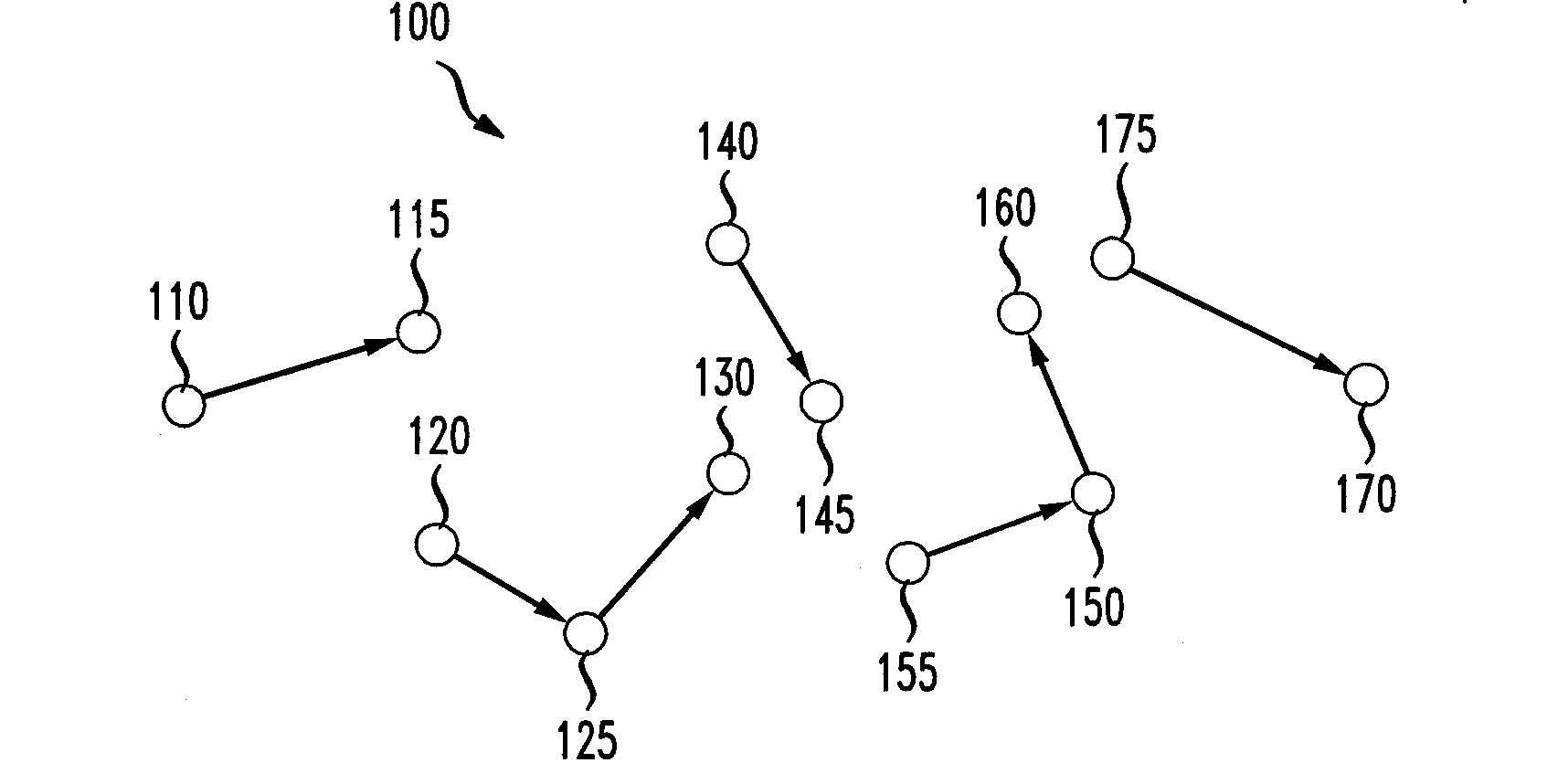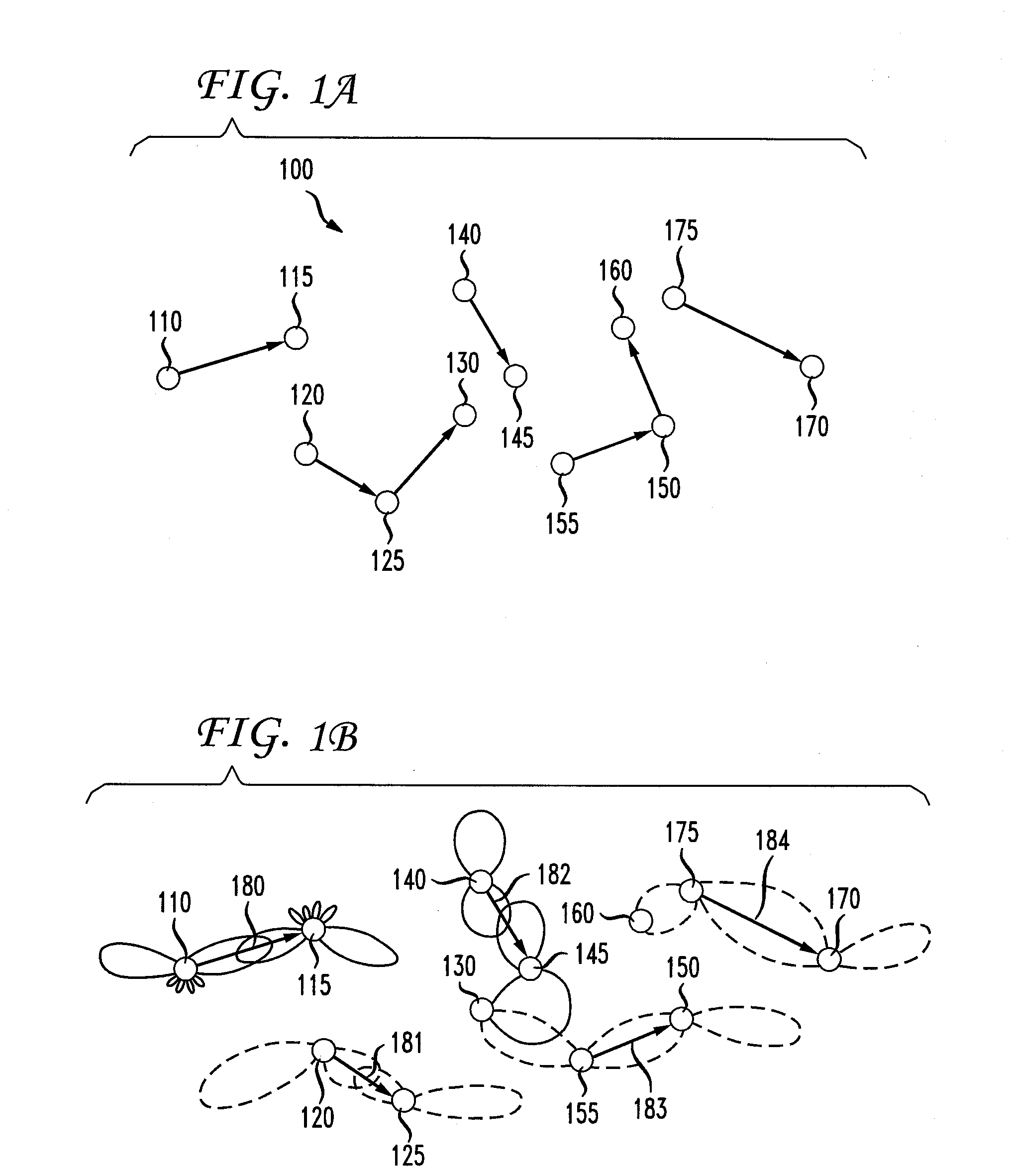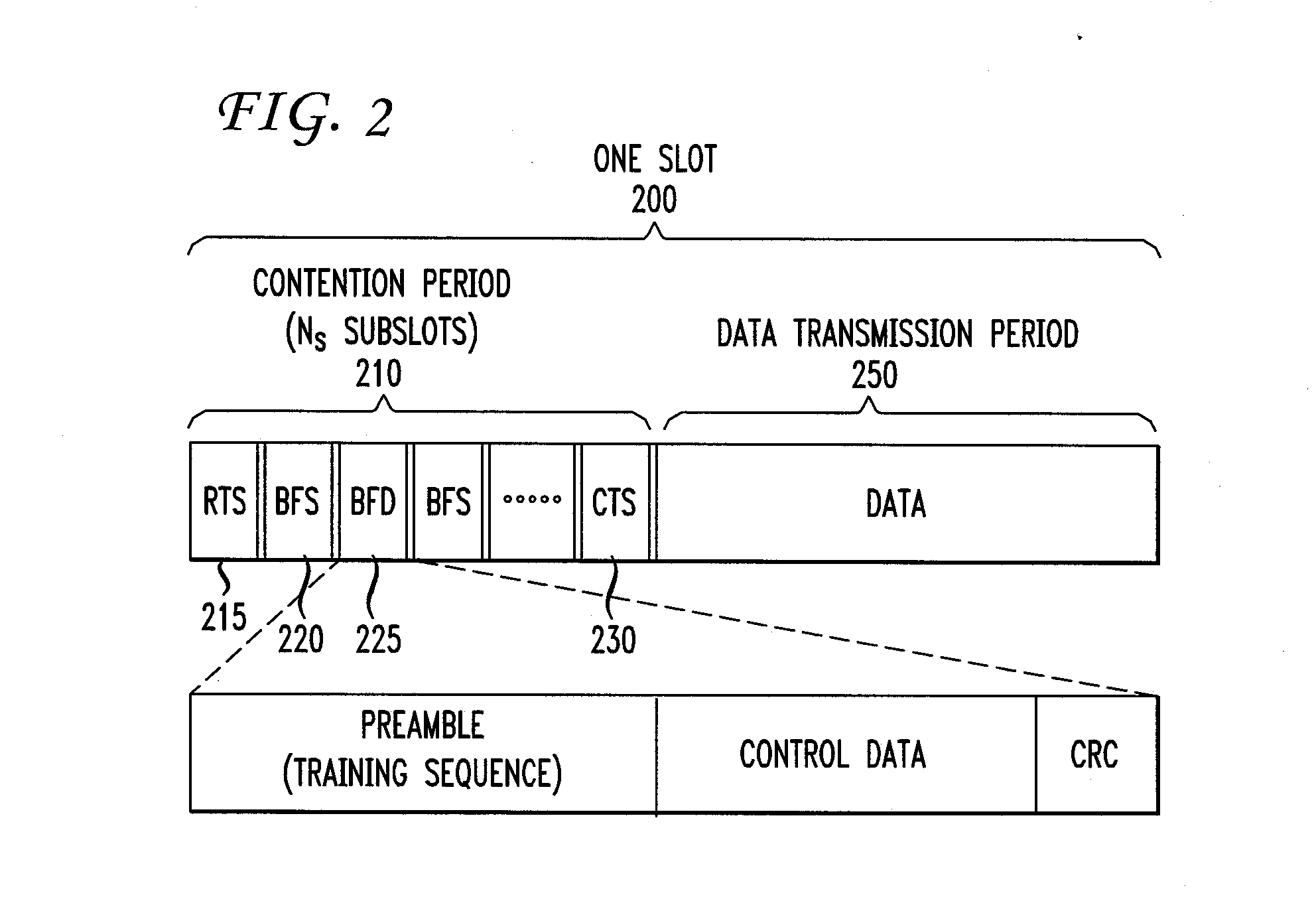Method and Apparatus for Medium Access Control for a Decentralized Network with Adapted Beamforming and Power Control
a technology of beamforming and power control, applied in the field of medium access control in communication networks, can solve the problems of significant energy constraints in the sensor network, inability to replace the battery of the sensor, and inability to achieve such an extent of energy storage of the sensor battery, etc., to achieve enhanced throughput and reduce the effect of average transmit power
- Summary
- Abstract
- Description
- Claims
- Application Information
AI Technical Summary
Benefits of technology
Problems solved by technology
Method used
Image
Examples
Embodiment Construction
[0015]FIG. 1A is a diagram illustrating a wireless communication network 100 in accordance with one embodiment of the present invention. Wireless network 100 has, illustratively, a plurality of nodes 110-175, each having one or more wireless antennas. Nodes 110-175 illustratively have an array of multiple cooperating antennas so as to take advantage of multiple input, multiple output (MIMO) techniques, as discussed above. Each node is, for example and without limitation, a network of wireless sensors, such as that discussed above, which gather and transmit information in a distributed manner. A group of such sensors can be combined into one node to form a cooperating sensor cluster that functions as a virtual antenna array. Nodes 110-175 are illustratively arranged in an ad hoc network. As is well known, an ad hoc network is a network in which nodes directly discover and communicate in a peer-to-peer fashion without involving a central access point. In such a network, nodes 110-175 ...
PUM
 Login to View More
Login to View More Abstract
Description
Claims
Application Information
 Login to View More
Login to View More - R&D
- Intellectual Property
- Life Sciences
- Materials
- Tech Scout
- Unparalleled Data Quality
- Higher Quality Content
- 60% Fewer Hallucinations
Browse by: Latest US Patents, China's latest patents, Technical Efficacy Thesaurus, Application Domain, Technology Topic, Popular Technical Reports.
© 2025 PatSnap. All rights reserved.Legal|Privacy policy|Modern Slavery Act Transparency Statement|Sitemap|About US| Contact US: help@patsnap.com



